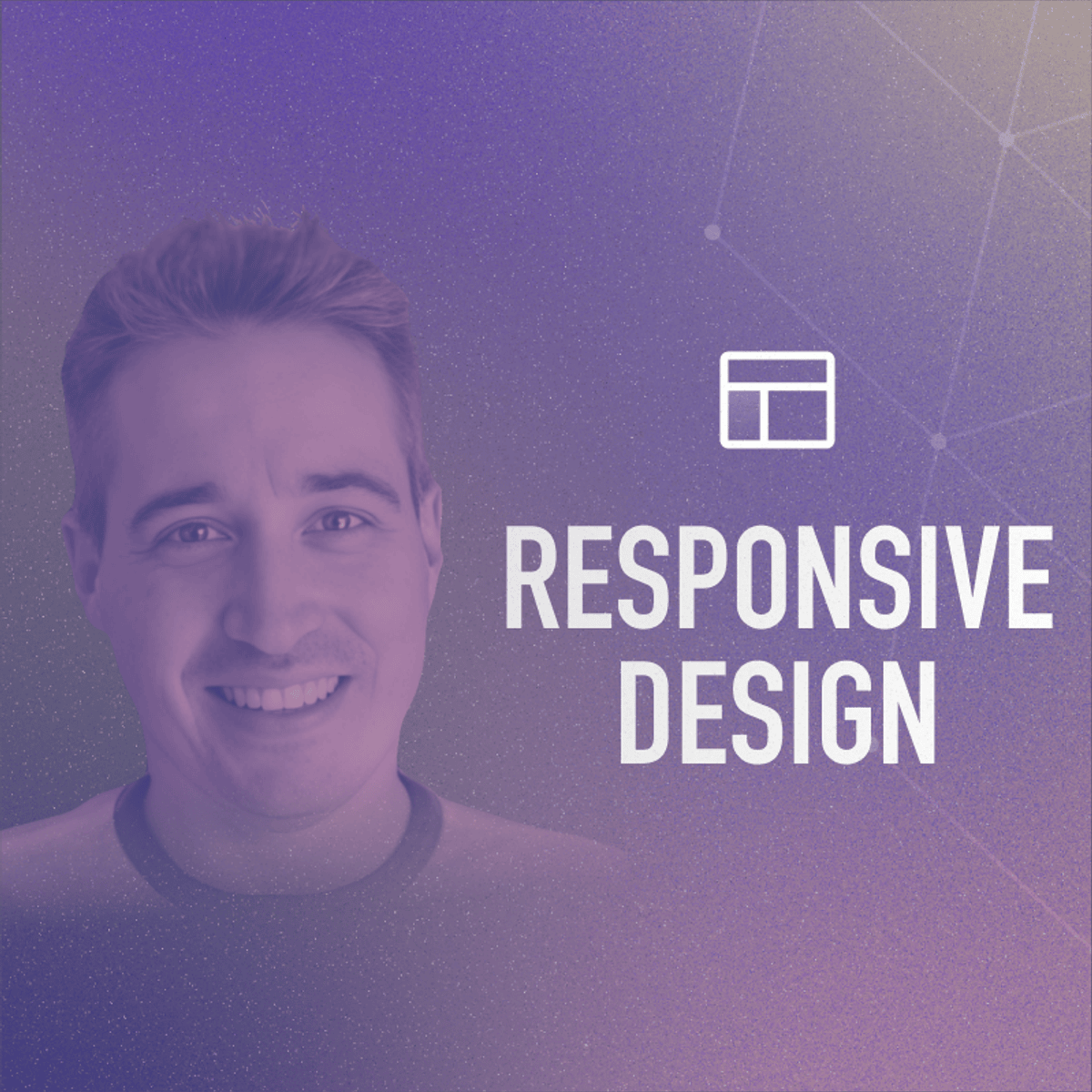Front-End Development
An Introduction to Front-End Development
Front-end development is the practice of creating the user interface (UI) and user experience (UX) of websites and web applications. It focuses on what users directly see and interact with in their browser or application – the layout, design, interactivity, and overall presentation. Think of it as the digital equivalent of designing the interior and facade of a building; it determines how people perceive and engage with the structure.
Working in front-end development involves translating design mockups into functional code, ensuring websites are responsive across different devices (like desktops, tablets, and phones), optimizing for speed and performance, and making sure the site is accessible to all users, including those with disabilities. It's a field that blends creativity with technical skill, requiring an eye for design alongside proficiency in coding languages. Many find satisfaction in building tangible interfaces that millions might use daily, shaping the digital experiences that define much of modern life.
What is Front-End Development?
This section defines the scope of front-end development and clarifies its position within the broader web and software development landscape.
Defining the Front-End
Front-end development primarily concerns itself with the client-side of web applications. This means everything the user interacts with directly: buttons, menus, forms, images, text styling, animations, and the overall structure of the content presented. Developers in this area use specific programming languages and technologies to build these elements and ensure they function correctly within a user's web browser.
The core responsibility is to create a seamless, intuitive, and visually appealing experience for the end-user. This involves not only implementing visual designs but also handling user input, fetching data from background systems (the "back-end"), and displaying it appropriately. Performance is also a key concern, as slow-loading or unresponsive interfaces can frustrate users and negatively impact engagement.
Ultimately, the goal is to bridge the gap between design concepts and a functional, interactive digital product. It requires collaboration with designers to understand the visual and interaction goals, and with back-end developers to integrate the user interface with the underlying data and logic.
These introductory courses provide a solid overview of what front-end development entails and the technologies involved.
Role in the Web Ecosystem
Front-end development is a critical component of nearly every website and web application. It acts as the face of the digital product, directly shaping the user's perception and interaction. Without effective front-end development, even the most powerful back-end systems would be unusable, as users would have no way to access or interact with the underlying functionality.
In the broader ecosystem, front-end developers work closely with UI/UX designers, back-end developers, product managers, and quality assurance testers. They transform static designs and prototypes into live, interactive experiences. They also ensure that the application works consistently across different web browsers (like Chrome, Firefox, Safari, Edge) and devices, adapting layouts and functionality as needed.
The front-end is also crucial for aspects like search engine optimization (SEO), as search engines analyze the structure and content presented to users. Furthermore, ensuring web accessibility, meaning the site can be used by people with disabilities, is a primary responsibility of front-end developers, often mandated by legal requirements and ethical considerations.
Front-End vs. Back-End vs. Full-Stack
Understanding the distinctions between front-end, back-end, and full-stack development is fundamental. Imagine a restaurant: Front-end development is like the dining area – the decor, the seating arrangement, the menus, and the interaction with the waitstaff. It's everything the customer sees and experiences directly.
Back-end development is analogous to the kitchen and storage areas. It involves the servers, databases, and application logic that process orders, manage inventory, and prepare the food. Customers don't see this directly, but it's essential for the restaurant's operation. Back-end developers work with server-side languages (like Python, Java, Ruby, Node.js) and databases to manage data and business logic.
Full-stack development combines both front-end and back-end skills. A full-stack developer is like the restaurant manager who understands both the customer-facing operations and the kitchen logistics. They can work on all parts of an application, from the user interface to the server and database. While versatile, specialization in either front-end or back-end is also common and valuable.
This course provides a glimpse into the back-end, helping to understand the contrast with front-end development.
Core Technologies of Front-End Development
Mastery of specific technologies is essential for any front-end developer. This section explores the fundamental building blocks used to create modern web interfaces.
HTML and CSS Fundamentals
HyperText Markup Language (HTML) and Cascading Style Sheets (CSS) are the foundational pillars of the web. HTML provides the structure and content of a webpage – defining headings, paragraphs, images, links, lists, and other elements. Think of it as the skeleton or framework of a house.
CSS, on the other hand, controls the presentation and visual styling – colors, fonts, layouts, spacing, and animations. It's like the paint, furniture, and decorations that give the house its appearance and aesthetic appeal. CSS allows developers to separate the visual design from the underlying structure, making code cleaner and easier to maintain.
Understanding semantic HTML (using tags appropriately based on their meaning) is crucial for accessibility and SEO. Proficiency in CSS includes mastering concepts like the box model, positioning, flexbox, and grid layout systems, which are essential for creating complex and responsive designs.
These courses offer a strong foundation in HTML and CSS, essential for any aspiring web developer.
These books are excellent resources for diving deeper into HTML and CSS.
JavaScript and Modern Frameworks
If HTML is the structure and CSS is the presentation, JavaScript (JS) is the engine that adds interactivity and dynamic behavior to web pages. It allows developers to manipulate page content, respond to user actions (like clicks and keyboard input), communicate with servers asynchronously (without reloading the page), and create complex features like interactive maps, animations, and real-time updates.
Vanilla JavaScript (plain JS without additional libraries) is the core language. However, the modern front-end landscape is dominated by JavaScript frameworks and libraries like React, Angular, and Vue.js. These tools provide pre-written code structures, components, and patterns that streamline development, enforce best practices, and make building complex single-page applications (SPAs) more manageable.
Choosing which framework to learn often depends on project requirements or job market trends, but a strong understanding of fundamental JavaScript concepts is essential regardless of the framework used. Mastering concepts like the DOM (Document Object Model), events, asynchronous programming (Promises, async/await), and ES6+ features forms the bedrock of modern front-end development.
These courses cover JavaScript fundamentals and introduce popular frameworks like React and Vue.
These books provide in-depth knowledge of JavaScript.
Browser Rendering Principles
Understanding how web browsers take HTML, CSS, and JavaScript code and turn it into a visible webpage is crucial for optimizing performance. This process, known as the rendering pipeline, involves several steps: parsing HTML to build the Document Object Model (DOM), parsing CSS to build the CSS Object Model (CSSOM), combining them to create the Render Tree, performing layout (calculating the size and position of each element), and finally painting the pixels onto the screen.
JavaScript can interact with and modify the DOM and CSSOM, potentially triggering re-layouts and re-paints, which can be computationally expensive. Inefficient code or poorly structured CSS can lead to performance bottlenecks, resulting in slow loading times, jerky animations, and unresponsive interfaces.
Optimizing rendering involves techniques like minimizing DOM manipulations, writing efficient CSS selectors, debouncing or throttling event handlers, and leveraging browser features like hardware acceleration. Awareness of these principles allows developers to build faster, smoother, and more efficient web experiences.
This course specifically focuses on optimizing the browser rendering process.
This book covers browser networking performance, which is closely related to rendering.
Version Control Systems (Git)
Version control systems (VCS) are essential tools for managing changes to code over time, especially when working in teams. Git is the industry standard VCS for front-end development (and software development in general). It allows developers to track modifications, revert to previous versions, branch out to work on new features without affecting the main codebase, and merge changes from multiple contributors.
Platforms like GitHub, GitLab, and Bitbucket provide hosting for Git repositories and add features for collaboration, code review, issue tracking, and project management. Proficiency in Git commands (like commit, push, pull, branch, merge) and understanding branching strategies (like Gitflow) are fundamental skills for any professional developer.
Using Git effectively prevents code loss, facilitates collaboration, and streamlines the development workflow. It provides a safety net, allowing developers to experiment and refactor code with confidence, knowing they can easily undo changes if something goes wrong.
Tools and Workflow Optimization
Beyond core technologies, front-end developers rely on a variety of tools and established workflows to build, manage, and deploy applications efficiently.
Package Managers (npm, yarn)
Modern front-end development involves using numerous third-party libraries and frameworks (e.g., React, Lodash, date-fns). Package managers like npm (Node Package Manager) and Yarn automate the process of installing, updating, and managing these external dependencies for a project.
They maintain a manifest file (typically package.json) that lists all project dependencies and their specific versions. This ensures that all developers working on the project, as well as deployment environments, use the same versions of libraries, preventing compatibility issues ("it works on my machine" problems). Package managers handle fetching the code from online registries, resolving dependency conflicts, and running scripts related to the project lifecycle (like starting a development server or building the application).
Understanding how to use package managers effectively is crucial for setting up projects, managing dependencies, and ensuring reproducible builds across different environments.
Build Tools (Webpack, Vite)
Build tools automate the process of preparing front-end code for deployment in a production environment. Modern development often involves writing code using features not yet supported by all browsers (like newer JavaScript syntax or CSS preprocessors like Sass/LESS), using modules to organize code, and optimizing assets for performance.
Tools like Webpack and Vite bundle multiple JavaScript files into fewer, optimized files, transpile modern JavaScript and CSS into compatible versions using tools like Babel and PostCSS, optimize images, and perform other tasks like code splitting (loading code only when needed) and minification (removing unnecessary characters from code to reduce file size). These optimizations are critical for improving website loading speed and overall performance.
While frameworks often abstract away much of the build configuration, understanding the underlying concepts and how these tools work can be beneficial for debugging, advanced customization, and performance tuning.
Testing Frameworks (Jest, Cypress)
Writing tests is a vital part of professional front-end development to ensure code quality, prevent regressions (bugs reappearing after being fixed), and facilitate refactoring. Various types of tests exist: unit tests check individual functions or components in isolation, integration tests verify interactions between different parts of the application, and end-to-end (E2E) tests simulate real user scenarios in a browser.
Frameworks like Jest (often used with React Testing Library) are popular for unit and integration testing JavaScript code and components. Tools like Cypress and Playwright excel at E2E testing, automating browser interactions to validate complete user workflows.
A solid testing strategy increases confidence in the codebase, makes collaboration easier, and ultimately leads to more robust and reliable applications. While writing tests requires additional effort upfront, it saves significant time and resources in the long run by catching bugs early in the development cycle.
This course focuses on preparing for front-end interviews, which often include questions about testing.
CI/CD Pipelines
Continuous Integration (CI) and Continuous Deployment/Delivery (CD) refer to practices and automated pipelines that streamline the process of building, testing, and deploying code changes. CI involves automatically building and testing code every time a change is pushed to the version control system (like Git). This helps catch integration errors and bugs quickly.
CD extends this by automatically deploying the tested code to staging or production environments. This automation reduces manual effort, minimizes human error, and allows for faster and more frequent releases of new features and bug fixes. Tools like Jenkins, GitLab CI/CD, GitHub Actions, and CircleCI are commonly used to implement CI/CD pipelines.
For front-end developers, CI/CD pipelines typically automate tasks like installing dependencies, running linters (code style checks), executing unit and E2E tests, building the application using tools like Webpack or Vite, and deploying the resulting static assets to hosting platforms or content delivery networks (CDNs).
This course touches upon serverless functions, often deployed via CI/CD pipelines.
Responsive and Adaptive Design
Creating websites that look and function well on a wide range of devices and screen sizes is a core requirement of modern front-end development.
Mobile-First Design Principles
Mobile-first design is an approach where development starts with the smallest screen size (mobile) and progressively enhances the layout and features for larger screens (tablets, desktops). This strategy contrasts with older methods that designed for desktops first and then tried to scale down, often leading to compromised mobile experiences.
Given that mobile internet usage often surpasses desktop usage globally, designing for mobile first ensures a solid user experience for the majority of users. It forces developers and designers to prioritize essential content and functionality due to limited screen real estate. This often results in cleaner, more focused designs that benefit users on all devices.
Implementing mobile-first involves using responsive techniques like fluid grids, flexible images, and CSS media queries to adapt the layout based on screen width or other device characteristics.
This course specifically covers responsive design techniques.
This book introduces principles relevant to modern, adaptable design.
CSS Frameworks (e.g., Bootstrap, Tailwind CSS)
CSS frameworks provide pre-built components (like buttons, forms, navigation bars, modals) and utility classes or layout systems that accelerate the development of responsive and visually consistent user interfaces. Bootstrap has historically been very popular, offering a wide range of ready-to-use components styled with CSS and enhanced with JavaScript.
Tailwind CSS represents a different, utility-first approach. Instead of pre-defined components, it provides low-level utility classes (e.g., pt-4 for padding-top, flex for flexbox) that developers compose directly in their HTML to build custom designs without writing much custom CSS. Other frameworks like Foundation, Bulma, and Material UI (for React) also offer distinct approaches and component sets.
Using a framework can significantly speed up development, enforce consistency, and handle many common responsive design challenges. However, it's important to understand the underlying CSS principles to effectively use and customize these frameworks.
These courses focus on popular CSS frameworks like Bootstrap and Tailwind CSS.
Cross-Browser Compatibility Strategies
Users access the web through various browsers (Chrome, Firefox, Safari, Edge, etc.) and different versions of those browsers. These browsers may interpret HTML, CSS, and JavaScript slightly differently or support different features. Ensuring a consistent experience across major browsers is known as cross-browser compatibility.
Strategies involve writing standards-compliant code, using feature detection (checking if a browser supports a feature before using it), employing polyfills (code that adds missing features to older browsers), and utilizing tools like Babel and PostCSS to transpile modern code into more widely supported versions. Testing applications thoroughly on target browsers using tools like BrowserStack or LambdaTest is also crucial.
While modern browsers adhere more closely to web standards than in the past, subtle differences still exist, especially with newer CSS and JavaScript features. Addressing compatibility ensures a wider audience can access and use the web application effectively.
Performance Metrics (LCP, FID, CLS)
Web performance is critical for user experience and SEO. Google's Core Web Vitals initiative highlights key metrics that quantify the user's experience: Largest Contentful Paint (LCP), First Input Delay (FID), and Cumulative Layout Shift (CLS).
LCP measures loading performance – specifically, how long it takes for the largest visible element (usually an image or text block) to render on the screen. FID measures interactivity – the delay between a user's first interaction (like clicking a button) and the browser's response. CLS measures visual stability – how much unexpected layout shifts occur as the page loads, which can be disruptive for users.
Front-end developers need to understand these metrics and employ optimization techniques to improve them. This includes optimizing images, minimizing render-blocking resources (CSS and JavaScript that delay page rendering), improving server response times, efficiently loading third-party scripts, and reserving space for content that loads asynchronously to prevent layout shifts. Tools like Google Lighthouse and WebPageTest help measure these metrics and identify areas for improvement.
This capstone project course emphasizes performance and accessibility standards.
Accessibility in Front-End Development
Web accessibility (often abbreviated as a11y) is the practice of designing and developing websites and applications so that people with disabilities can use them effectively. This is not just an ethical consideration but often a legal requirement.
WCAG Guidelines
The Web Content Accessibility Guidelines (WCAG) are the internationally recognized standard for web accessibility. Developed by the World Wide Web Consortium (W3C), WCAG provides a set of technical guidelines organized under four principles: Perceivable, Operable, Understandable, and Robust (POUR).
Perceivable means users must be able to perceive the information being presented (it can't be invisible to all of their senses). Operable means users must be able to operate the interface (the interface cannot require interaction that a user cannot perform). Understandable means users must be able to understand the information as well as the operation of the user interface (the content or operation cannot be beyond their understanding). Robust means users must be able to access the content as technologies advance (as technologies and user agents evolve, the content should remain accessible).
WCAG includes specific success criteria at different conformance levels (A, AA, AAA) that define requirements for things like text alternatives for images, keyboard navigation, sufficient color contrast, clear headings, and understandable form labels. Front-end developers need to be familiar with these guidelines to build accessible products.
Semantic HTML Practices
Using HTML elements according to their intended meaning (semantic HTML) is fundamental to accessibility. Assistive technologies, like screen readers used by visually impaired users, rely on the HTML structure to interpret the content and make it navigable.
For example, using heading tags (</p><h1> to <h6>) correctly creates a document outline that screen readers can use for navigation. Using <button> for interactive controls ensures they are keyboard accessible and announced correctly. Using landmark elements like <nav>, <main>, and <aside> helps users understand the page structure. Providing descriptive alt text for images allows users who cannot see them to understand their content or purpose.
Conversely, using non-semantic elements like </p><div> and <span> for everything and relying solely on CSS for appearance makes the content inaccessible to many users. Writing semantic HTML benefits not only accessibility but also SEO and code maintainability.
These courses cover HTML fundamentals, including semantic practices crucial for accessibility.
Screen Reader Compatibility
Screen readers are software applications that read aloud the content of a computer screen, primarily used by people with visual impairments. Ensuring compatibility involves more than just using semantic HTML. Developers need to consider how interactive elements behave, how dynamic content updates are announced, and whether all functionality is accessible via keyboard navigation alone.
ARIA (Accessible Rich Internet Applications) attributes can be added to HTML to provide additional information to assistive technologies, especially for complex custom components built with JavaScript. For example, ARIA attributes can define roles (like role="dialog"), states (like aria-expanded="true"), and properties (like aria-label="Close") for elements that lack native semantics.
Testing with actual screen readers (like NVDA, JAWS, or VoiceOver) is essential to understand the real user experience and identify issues that might not be apparent from code inspection alone.
Legal Compliance Requirements
In many countries, web accessibility is mandated by law for government websites and, increasingly, for private sector businesses. Laws like the Americans with Disabilities Act (ADA) in the United States and the European Accessibility Act (EAA) often reference WCAG standards as the benchmark for compliance.
Failure to meet accessibility requirements can lead to lawsuits, fines, and reputational damage. Beyond legal obligations, prioritizing accessibility demonstrates social responsibility and expands the potential audience for a website or application. Businesses that embrace accessibility often find it leads to better overall design, improved usability for everyone, and enhanced brand image.
Front-end developers play a key role in ensuring compliance by building interfaces that meet or exceed WCAG standards from the outset.
Career Pathways in Front-End Development
Front-end development offers diverse career opportunities, from entry-level positions to specialized senior roles, in various work environments.
Entry-Level Roles (Junior Developer)
Individuals starting their careers typically enter as Junior Front-End Developers. In this role, they usually work under the guidance of more senior developers, focusing on implementing specific UI components, fixing bugs, writing basic CSS and HTML, and learning the team's codebase and workflow. Responsibilities often include translating design mockups into code, ensuring responsiveness, and performing basic testing.
A strong foundation in HTML, CSS, and JavaScript is essential. Familiarity with at least one major framework (React, Angular, Vue) is often expected or highly beneficial. Junior developers are expected to be eager learners, possess good problem-solving skills, and collaborate effectively within a team.
Building a portfolio of personal projects is crucial for demonstrating skills to potential employers, especially for those without formal computer science degrees or extensive prior experience. Online courses and bootcamps can provide the necessary skills and project opportunities to prepare for these roles.
These comprehensive courses cover a wide range of front-end skills valuable for entry-level roles.
Mid-Career Progression (Tech Lead)
With experience, front-end developers progress to mid-level and senior roles. Responsibilities expand to include designing component architectures, making technical decisions, mentoring junior developers, leading feature development, optimizing performance, and ensuring code quality through reviews and testing.
Further progression can lead to roles like Tech Lead or Front-End Architect. Tech Leads often guide a team of developers, manage project timelines, liaise with product managers and designers, and set technical direction for front-end development within a project or team. Architects focus more on high-level system design, establishing best practices, evaluating new technologies, and ensuring the scalability and maintainability of the front-end codebase across multiple projects or the entire organization.
These roles require deep technical expertise, strong communication and leadership skills, and a thorough understanding of software design principles and patterns.
Advanced courses help experienced developers deepen their expertise.
Specialization Options (UI Engineering, Performance)
As the field matures, specialization becomes more common. Some developers focus deeply on specific frameworks like React or Angular, becoming experts in their ecosystems. Others specialize in UI Engineering, focusing on building complex, reusable component libraries and design systems, often working closely with UX designers.
Performance optimization is another specialization area, where developers focus on making websites load faster and run smoother, delving into browser internals, network protocols, and advanced optimization techniques. Accessibility specialization (a11y) is also growing, with developers focusing exclusively on ensuring products meet WCAG standards and are usable by everyone.
Other niches include data visualization (using libraries like D3.js), mobile development using web technologies (React Native, NativeScript), or working with WebGL for 3D graphics. Specializing allows developers to deepen their expertise in a specific area, often commanding higher salaries and tackling more complex challenges.
Courses focusing on specific libraries or advanced techniques support specialization.
Freelancing vs. Corporate Roles
Front-end developers can choose between traditional employment in companies (ranging from startups to large corporations) or working as freelancers or independent contractors. Corporate roles typically offer stability, benefits, structured career paths, and opportunities to work on large-scale projects within a team.
Freelancing offers flexibility in terms of projects, working hours, and location. Freelancers often work directly with clients on shorter-term projects, requiring strong self-management, communication, and business skills (marketing, invoicing, contracts). Income can be less predictable than a salaried position, but the potential earning rate per hour can be higher.
Some developers combine both, maintaining a part-time job while taking on freelance projects. The choice depends on individual preferences regarding stability, autonomy, work-life balance, and career goals. Both paths require continuous learning to keep skills up-to-date.
Formal Education Pathways
While front-end development is known for valuing skills and portfolios over strict academic credentials, formal education can provide a strong foundation and structured learning environment.
Computer Science Degrees
A Bachelor's degree in Computer Science (CS) or a related field (like Software Engineering or Information Technology) provides a comprehensive theoretical foundation. CS programs cover fundamental concepts like data structures, algorithms, operating systems, computer networks, and software design principles, which are applicable beyond just front-end development.
While a CS degree doesn't typically focus exclusively on front-end technologies like HTML, CSS, and specific JavaScript frameworks, the problem-solving skills and understanding of underlying computer systems are highly valuable. Many large tech companies prefer candidates with CS degrees, especially for more complex engineering roles. However, a degree is not a strict requirement for many front-end positions, particularly if a candidate can demonstrate strong practical skills through a portfolio.
Students pursuing a CS degree interested in front-end development should supplement their coursework with self-study or elective courses focused on web technologies. Explore Computer Science courses on OpenCourser to supplement a formal degree.
Bootcamp Programs
Coding bootcamps have emerged as a popular alternative or supplement to traditional degrees. These intensive, short-term programs (typically 3-6 months) focus specifically on teaching practical, job-ready skills for web development, often including a significant emphasis on front-end technologies like HTML, CSS, JavaScript, and popular frameworks.
Bootcamps offer a highly structured, immersive learning experience with a curriculum designed based on current industry demands. They often include career services support, such as portfolio reviews, interview preparation, and connections with hiring partners. The main advantages are speed and focus on practical application.
However, bootcamps can be expensive, and the fast pace requires significant commitment. The quality of bootcamps varies, so thorough research is essential. While bootcamps can be effective in transitioning into a tech career, graduates still need to demonstrate their skills through projects and potentially continue learning independently.
Certification Programs
Various organizations and platforms offer certifications in specific front-end technologies or general web development. These can range from vendor-specific certifications (e.g., from Microsoft or AWS related to cloud services used in deployment) to certifications from online course providers validating completion of specific learning paths.
Certifications can demonstrate commitment to learning and proficiency in particular areas. However, their value in the job market varies. In front-end development, a strong portfolio showcasing practical skills and real-world projects generally carries more weight than certifications alone. Certifications are often best viewed as a supplement to practical experience and a way to structure learning, rather than a primary credential.
Completing a specialization or professional certificate on platforms like Coursera can result in a shareable certificate.
Self-Taught Success Stories
Front-end development is a field where self-teaching is a viable and common path. The abundance of high-quality online resources – including documentation, tutorials, online courses, blogs, and open-source projects – makes it possible to acquire the necessary skills without formal schooling.
Successful self-taught developers are typically highly motivated, disciplined, and proactive learners. They build extensive portfolios by working on personal projects, contributing to open-source, or doing freelance work. Networking through online communities, meetups, and conferences is also important for learning and finding opportunities.
While the self-taught route requires significant dedication and self-direction, it offers flexibility and can be cost-effective. Employers often value demonstrated ability and passion for coding over specific educational backgrounds, making this a realistic pathway into the industry.
Online Learning Strategies
For both self-taught learners and those supplementing formal education, online resources offer flexible and accessible ways to master front-end development.
Structured Learning Paths
Navigating the vast amount of online information can be overwhelming. Following a structured learning path, whether provided by an online platform or self-curated, can provide direction and ensure comprehensive coverage of necessary topics. Many platforms offer "career paths" or "specializations" that group courses logically, starting with fundamentals (HTML, CSS, JS) and progressing to frameworks, tools, and advanced concepts.
Creating a personal learning plan involves identifying skill goals, finding relevant resources (courses, books, tutorials), setting realistic timelines, and tracking progress. Consistency is key; dedicating regular time to learning, even if it's just an hour a day, is more effective than sporadic marathon sessions.
OpenCourser provides tools to find and compare courses, helping learners build their own paths. Check out the Programming and Design categories for relevant courses.
These courses offer comprehensive learning experiences, often part of larger specializations.
Project-Based Learning
Passive learning (watching videos, reading articles) is not enough to master development skills. Active learning through building projects is essential for solidifying concepts and gaining practical experience. Start with small, manageable projects and gradually increase complexity as skills grow.
Ideas for projects include cloning existing websites, building a personal portfolio site, creating a simple game, developing a utility tool (like a calculator or weather app), or contributing to an open-source project. The process of planning, coding, debugging, and deploying a project provides invaluable hands-on experience.
Documenting projects on platforms like GitHub not only showcases skills to potential employers but also reinforces learning. Many online courses incorporate project-based learning, guiding students through building real-world applications.
These courses emphasize building projects to reinforce learning.
Open-Source Contributions
Contributing to open-source projects is an excellent way to gain real-world experience, collaborate with other developers, learn best practices, and build a professional network. Many popular front-end libraries, frameworks, and tools are open-source.
Getting started can involve fixing bugs, improving documentation, writing tests, or adding small features. Platforms like GitHub make it easy to find projects looking for contributors. While it can seem intimidating initially, many projects welcome newcomers and offer guidance.
Open-source contributions demonstrate initiative, collaboration skills, and proficiency in using tools like Git. They provide tangible evidence of coding ability that can be highlighted on a resume or portfolio.
Portfolio Development
A strong portfolio is arguably the most important asset for a front-end developer seeking employment, especially for those without traditional credentials. It's a curated collection of projects that showcases technical skills, problem-solving abilities, and design sense.
The portfolio itself should be a well-designed, responsive website. Each project featured should include a description of the project goals, the technologies used, the developer's specific contributions, challenges faced, and solutions implemented. Links to live demos and GitHub repositories are essential.
Quality over quantity is important; it's better to showcase a few polished, complex projects than many small, unfinished ones. Tailor the portfolio to highlight skills relevant to the desired roles. Continuously update the portfolio with new projects and skills as learning progresses.
These courses focus on building portfolios or capstone projects suitable for showcasing skills.
Front-End Development in the AI Era
Artificial intelligence (AI) is beginning to impact various aspects of software development, including the front-end. Understanding these trends is important for future-proofing skills.
AI-Assisted Coding Tools
AI-powered tools like GitHub Copilot, Tabnine, and Amazon CodeWhisperer are increasingly integrated into development environments (IDEs). These tools provide code suggestions, auto-completion, and even generate entire code snippets or functions based on natural language prompts or existing code context.
These assistants can potentially speed up development, reduce repetitive coding tasks, and help developers learn new APIs or patterns. However, they are tools, not replacements for understanding. Developers still need strong foundational knowledge to effectively use, debug, and evaluate the code generated by AI. Over-reliance without critical assessment can lead to subtle bugs or suboptimal solutions.
Learning how to effectively prompt and collaborate with AI coding assistants is becoming a valuable skill.
This course explores using AI for coding tasks.
Low-Code/No-Code Platforms
Low-code and no-code platforms allow users to build applications and websites with minimal or no traditional programming, often using visual drag-and-drop interfaces. While these platforms democratize development for simpler applications or specific use cases (like landing pages or internal tools), they typically offer less flexibility and customization than traditional coding.
These platforms may reduce the demand for basic website creation tasks but are unlikely to replace skilled front-end developers for complex, custom, high-performance applications. Front-end developers may even find opportunities in extending these platforms or building custom components for them. Understanding the capabilities and limitations of these tools is beneficial.
Future Skill Requirements
As AI handles more routine coding tasks, the value of uniquely human skills may increase. This includes critical thinking, complex problem-solving, creativity, user empathy, communication, and architectural design. Deep understanding of core principles (performance, accessibility, security) will remain crucial.
Developers may need to become adept at working alongside AI, guiding it, verifying its output, and integrating AI-powered features into applications. Specialization in areas requiring deep expertise, like complex UI interactions, performance optimization, or accessibility, may become even more valuable.
Continuous learning and adaptability will be paramount as the technological landscape evolves.
Ethical Implications of Automation
The rise of AI in development raises ethical considerations. Bias in training data can lead to AI tools generating biased or non-inclusive code. Issues around code ownership, intellectual property, and the potential for AI to generate insecure code need careful consideration.
Furthermore, the potential impact of automation on employment in the software industry is a topic of ongoing discussion. While AI is expected to augment rather than replace developers in the near future, understanding these broader societal and ethical implications is important for responsible technology development.
Ensuring AI tools are used ethically and contribute to building fair, accessible, and secure applications will be a collective responsibility for the tech community.
Frequently Asked Questions
Here are answers to some common questions about pursuing a career in front-end development.
Is a degree required for employment?
No, a traditional four-year computer science degree is not strictly required for many front-end development jobs. While some companies, particularly larger, more established ones, may prefer or require a degree, many employers prioritize demonstrable skills, practical experience, and a strong portfolio above formal education.
Coding bootcamps, online courses, and self-teaching are all viable paths into the field. What matters most is proficiency in core technologies (HTML, CSS, JavaScript), familiarity with relevant frameworks, problem-solving ability, and proof of work through projects showcased in a portfolio. A degree can provide a strong theoretical foundation but isn't the only way to acquire the necessary knowledge and skills.
How competitive is the job market?
The job market for front-end developers is generally robust, driven by the ongoing digital transformation across industries. However, it can also be competitive, particularly for entry-level positions. The accessibility of online learning resources means many people are acquiring front-end skills, increasing the pool of candidates.
Standing out requires more than just basic knowledge. A strong portfolio demonstrating practical application of skills, experience with modern frameworks, understanding of performance and accessibility, and good communication skills are crucial. Specializing in high-demand areas or frameworks can also provide an edge. Networking and potentially contributing to open-source projects can help uncover opportunities. According to the U.S. Bureau of Labor Statistics, employment for web developers and digital designers is projected to grow, indicating continued demand, but competition remains a factor.
What is a typical career progression timeline?
Career progression varies based on individual performance, learning speed, company structure, and opportunities. A typical trajectory might look like this:
- Junior Developer (0-2 years): Focus on learning codebase, implementing features under supervision, fixing bugs.
- Mid-Level Developer (2-5 years): More autonomy, handle complex tasks, contribute to design discussions, mentor juniors occasionally.
- Senior Developer (5+ years): Lead feature development, make architectural decisions, mentor juniors extensively, deep expertise in specific areas.
- Lead/Architect/Manager (8+ years): Beyond senior roles, paths diverge into technical leadership (Tech Lead, Architect) focusing on high-level design and strategy, or people management (Engineering Manager) focusing on team growth and project delivery.
Are remote work opportunities common?
Yes, remote work opportunities are very common in front-end development, arguably more so than in many other professions. The nature of the work, which primarily requires a computer and internet connection, lends itself well to remote arrangements. Many tech companies, from startups to large corporations, adopted remote or hybrid models even before 2020, and the trend has accelerated since.
Job boards frequently list remote front-end positions available globally. However, competition for fully remote roles can be higher. Effective communication, self-discipline, and proficiency with collaboration tools are essential for success in a remote setting.
Is freelancing a viable option?
Freelancing is a highly viable option for experienced front-end developers. Many businesses, small and large, hire freelancers for specific projects, website redesigns, or to supplement their existing teams. Platforms like Upwork, Fiverr, and Toptal connect freelancers with clients, although building direct client relationships is also common.
Success as a freelancer requires not only strong technical skills but also business acumen: marketing yourself, negotiating contracts, managing client communication, invoicing, and handling finances. It offers flexibility but requires discipline and tolerance for income variability. Building a strong portfolio and network is crucial for attracting clients.
What are typical salary expectations?
Salaries for front-end developers vary significantly based on factors like location (cost of living), years of experience, specific skills (expertise in popular frameworks, specialization), company size, and industry. Entry-level salaries might start around $60,000-$80,000 USD in major US tech hubs, but can be lower in other regions or for roles requiring less experience.
Mid-level developers can expect salaries ranging from $80,000 to $120,000+, while senior developers and specialists can earn well over $120,000, sometimes exceeding $180,000-$200,000+ at top companies or in high-cost-of-living areas. Freelance rates also vary widely, often charged hourly or per project. Researching salary data specific to your region and experience level on sites like Glassdoor, Levels.fyi, or through recruiter insights is recommended.
Embarking on a path in front-end development requires dedication to continuous learning and practice. Whether pursuing formal education, bootcamps, or self-study through online resources like those found on OpenCourser, building a strong foundation and a compelling portfolio is key. The field offers creative satisfaction, intellectual challenges, and diverse career opportunities for those willing to put in the effort. Remember to consult resources like the OpenCourser Learner's Guide for tips on navigating online education effectively.






































